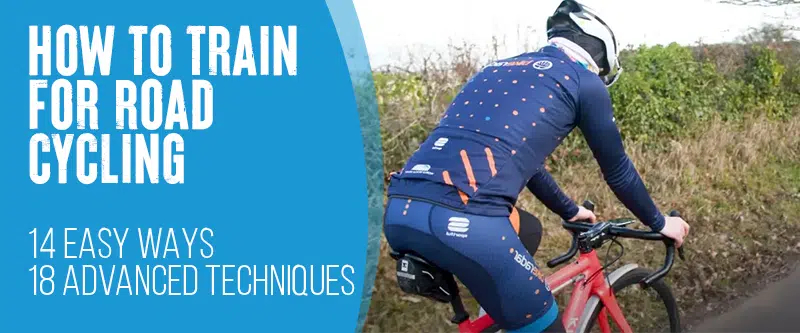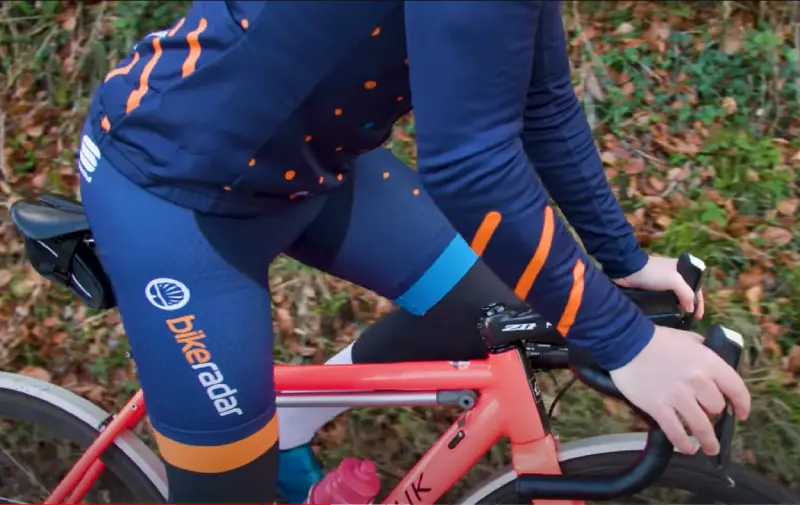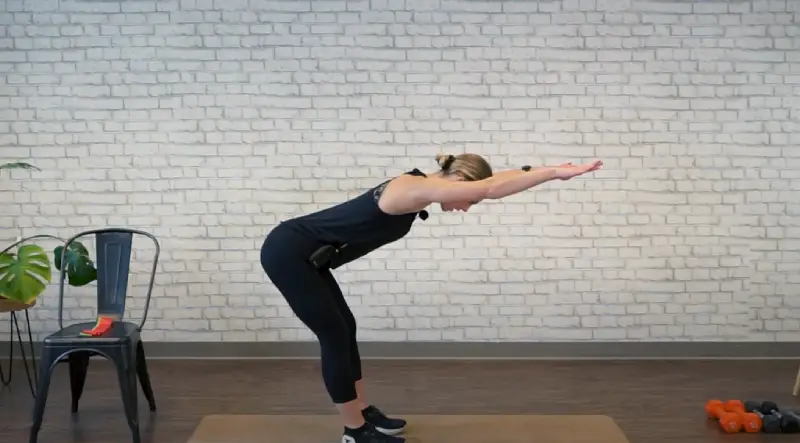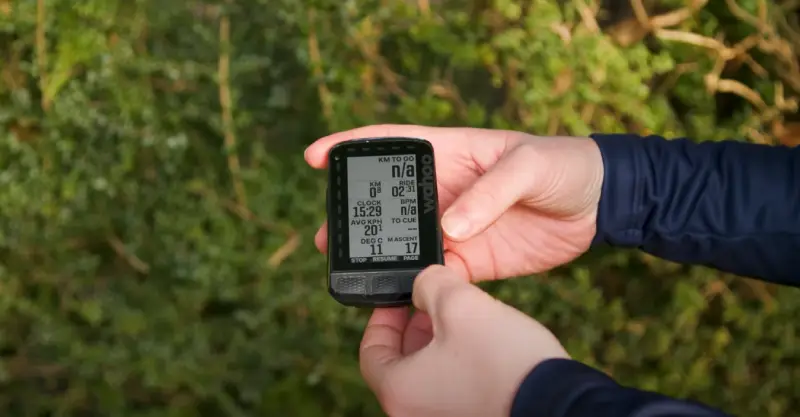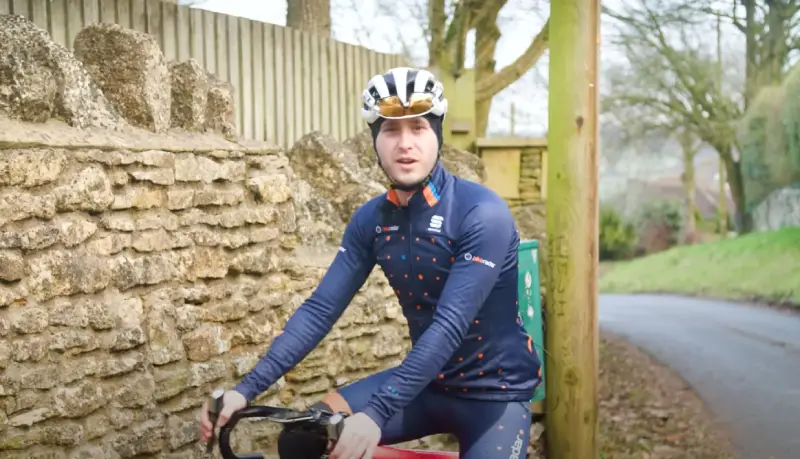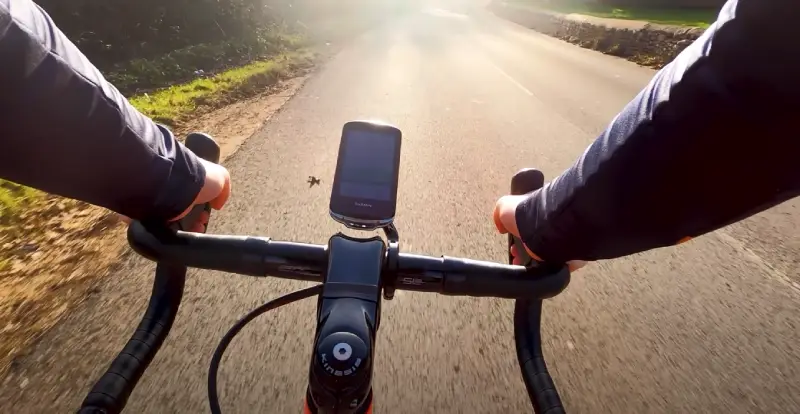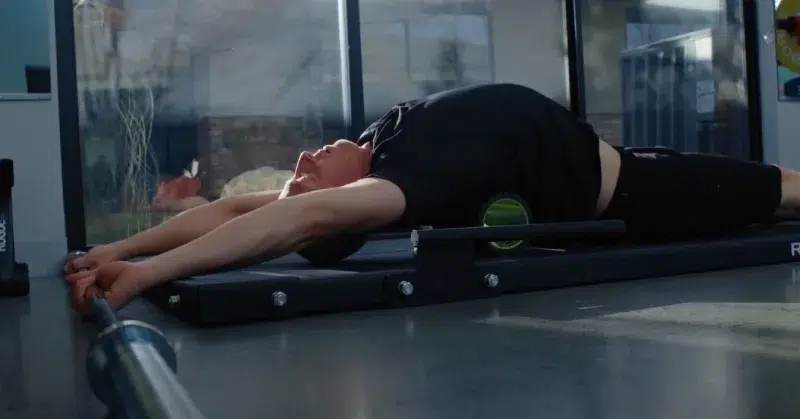Road cycling encompasses various styles, from recreational rides to competitive races, commuting, and practical utility cycling, all taking place on paved roadways.
To train for road cycling, gradually increase your mileage each week, starting from 5 to 8 miles per ride. Ride several days a week to build fitness and get accustomed to the bike.
Opt for longer cycles on allocated days, like 25 minutes on Wednesday and 35 minutes on the weekend, to enhance endurance and performance.
In this blog, we will explore effective training plans, key workouts, premium gear, and progress tracking. Delve into mental readiness, as vital as physical prep, and tips to sidestep injuries that could impede your pace. Get ready for this thrilling journey ahead!
How To Train For Road Cycling: 14 Easy Ways
Starting a road cycling journey requires clear goals for progress and motivation. Identify objectives, assess fitness, and research cycling practices. Categorize goals into short-term achievements and long-term aspirations for tracking and motivation. A structured training plan is vital, balancing intensity, recovery, and tailored workouts for systematic progress and injury prevention.
Setting Your Road Cycling Goals
Embarking on a road cycling journey necessitates clear goal-setting to ensure structured progress and sustained motivation. Setting specific, attainable, relevant, measurable, and time-bound (SMART) goals provides a roadmap for achieving cycling success. Below, we delve into the essential steps to set effective road cycling goals.
Determining Your Road Cycling Objectives
Identifying your objectives is a critical first step in your training regimen. Your objectives will guide your training plan and keep you focused.
- Identify Your Purpose: Understand why you want to train for road cycling. Are you aiming for competitive races, improving fitness, or simply enjoying long rides?
- Measure Your Fitness Level: Assess your current fitness level to set realistic targets. This can involve self-assessment or seeking professional evaluation.
- Research and Gather Information: Look into what successful cyclists do and the benchmarks you need to achieve specific milestones.
- Set Specific Targets: Decide on precise metrics like distance, speed, or endurance improvements you aim to reach.
Establishing Short-term and Long-term Road Cycling Goals
Categorizing your goals into long-term and short-term allows you to track progress incrementally and stay motivated through achievable milestones.
- Short-term Goals: These are smaller, immediate goals that pave the way to your larger ambitions.
- Weekly Distance Targets: Aim to accumulate your weekly mileage.
- Technique Improvements: Focus on enhancing specific skills such as cornering, climbing, or sprinting.
- Consistency: Commit to a regular training schedule and stick to it.
- Long-term Goals: These encompass broader, more ambitious targets that you aspire to achieve over an extended period.
- Race Participation: Set a goal to take part in local or national cycling events.
- Personal Bests: Work towards achieving personal best times in various distances.
- Endurance Milestones: Aim to complete century rides (100 miles) or multi-day cycling tours.
Building a Road Cycling Training Plan
A well-structured training plan is the cornerstone of successful road cycling preparation. It ensures systematic progress, minimizes the risk of injury, and helps in achieving your cycling goals efficiently. Below, we explore the key components of building a robust road cycling training plan.
Creating a Weekly Road Cycling Training Schedule
A weekly training schedule provides a consistent framework that balances intensity and recovery, crucial for sustained improvement.
- Assessment and Customization: Tailor your schedule based on your current fitness level, time availability, and goals.
- Balanced Workouts: Incorporate a mix of endurance rides, recovery sessions, and speed workouts.
- Endurance Rides: Aim for long, steady rides to build stamina. Example: 60-80 km at a moderate pace.
- Speed Workouts: Include interval training to improve speed and power. Example: 4×5-minute high-intensity intervals with
3 minutes’ rest. - Recovery Sessions: Ensure you have simple rides or complete rest days to allow muscles to recover. Example: 30-40 km at a relaxed pace or a full rest day.
- Consistency and Flexibility: Stick to your schedule but remain flexible to adjust based on your physical condition and external factors such as weather.
- Cross-training and Strength Training: Integrate activities like swimming, running, or gym workouts to enhance overall fitness and prevent monotony.
Periodization in Road Cycling Training
Periodization is a strategic approach that divides your training into distinct phases, each with specific goals and focus areas. This method maximizes performance and minimizes the risk of burnout.
- Macrocycle: The overall training period, typically spanning several months up to a year, leading to a significant event or goal.
- Preparation Phase: Focus on building a solid aerobic base. Include long, steady rides and general strength training.
- Build Phase: Increase intensity with more interval training and hill workouts to enhance power and endurance.
- Peak Phase: Fine-tune your fitness with race-specific training, tapering down volume while maintaining intensity.
- Transition Phase: A recovery period post-event where the focus is on rest and low-intensity activities.
- Mesocycle: A block of 3-6 weeks within the macrocycle, each focusing on a particular aspect of training (e.g., endurance, strength).
- Microcycle: Typically one week, providing detailed structure on daily workouts and recovery sessions.
Essential Road Cycling Workouts
To excel in road cycling, incorporating a variety of workouts into your routine is crucial. Each workout type serves a specific purpose, from building endurance to enhancing strength and speed. Below are key workouts every road cyclist should consider:
Interval Training for Road Cyclists
Interval training consists of alternating high-intensity efforts with recovery periods. This method is exceptionally valuable for enhancing aerobic and anaerobic capacity, establishing it as a crucial component of a dedicated road cyclist’s routine.
- High-Intensity Intervals: Short bursts of maximum effort followed by rest periods.
- Threshold Intervals: Sustained efforts at or near lactate threshold.
- Pyramid Intervals: Exercising for a longer period of time and then reducing it again.
Strength Training Specific to Road Cycling
Strength training helps improve power output, enhances muscle endurance, and reduces the risk of injury. Train the muscles that are most used in cycling, such as the quadriceps, hamstrings, glutes, and core.
- Squats: Build leg and glute strength.
- Deadlifts: Improve posterior chain strength.
- Core Exercises: Planks, Russian twists, and leg raises for stability.
Endurance Building Rides for Road Cyclists
Endurance rides are the backbone of road cycling training, helping to build the aerobic base necessary for long-distance events. These rides are typically longer in duration but lower in intensity.
- Long Steady Rides: Maintain a steady pace for extended periods.
- Tempo Rides: Ride at a moderate, sustainable pace that’s just below the lactate threshold.
- Group Rides: Social rides that can help maintain motivation and provide drafting practice.
Recovery and Rest Days in Road Cycling Training
Recovery holds equal significance as the workouts. Adequate rest facilitates muscle repair and growth, averting overtraining and burnout. Incorporate both active recovery and complete rest days into your training plan.
- Active Recovery: Light activities like easy spins or yoga.
- Complete Rest: No strenuous activity to allow full recovery.
- Sleep and Nutrition: Prioritize adequate sleep and eating a healthy, balanced diet.
Equipment and Gear for Road Cycling
Embarking on the journey of road cycling demands more than just enthusiasm; it requires the right equipment and gear to ensure safety, efficiency, and comfort. As a road cyclist, investing in high-quality gear not only enhances your performance but also contributes significantly to your overall experience. Let’s delve into the essentials that will prepare you for the road ahead.
Choosing the Right Bike for Road Cycling
Selecting the bike is paramount for any road cyclist. With the right bike, you can see a significant improvement in your performance and comfort. Here are key considerations to guide your choice:
- Frame Material: The material of the bike frame affects weight, durability, and ride quality. Options include aluminum, carbon fiber, steel, and titanium.
- Aluminum: Lightweight and affordable, ideal for beginners.
- Carbon Fiber: Known for its lightweight and excellent vibration dampening, though it comes at a higher price.
- Steel: Offers a comfortable ride with good longevity but is heavier.
- Titanium: Combines lightweight and durability, but is typically the most expensive option.
- Bike Fit: Ensuring a proper fit is crucial to avoid discomfort and injuries. Consider a professional bike fitting service to adjust saddle height, handlebar reach, and other parameters.
- Gearing and Drivetrain: Choose to gear that matches your fitness level and the terrain you’ll be riding on. A compact crankset with a wide range cassette can accommodate various riding conditions.
- Wheelset: Opt for a sturdy, lightweight wheelset to improve your bike’s agility and speed.
- Brakes: Disc brakes provide better braking power and control, especially in wet conditions, compared to traditional rim brakes.
Must-have gear and accessories for Road Cyclists
Equipping yourself with the gear and accessories improves performance, comfort, and safety. Here’s a list of must-haves for every road cyclist:
- Helmet: A well-fitted helmet is non-negotiable for protecting against head injuries. Look for one that meets safety standards and has adequate ventilation.
- Cycling Apparel: Invest in moisture-wicking, breathable clothing. Cycling shorts with padding can prevent saddle sores on long rides.
- Gloves: Padded gloves reduce hand fatigue and provide better grip on the handlebars.
- Shoes and Pedals: Clipless pedals paired with cycling shoes enhance power transfer and pedaling efficiency.
- Sunglasses: Protect your eyes from debris, UV rays, and dust.
- Hydration System: A hydration pack or water bottle is essential for staying hydrated during rides.
- Repair Kit: Bring tire levers, spare tubes, a mini pump or CO2 inflator, and a multi-tool for on-the-go fixes.
- Lights and Reflective Gear: For visibility in low-light conditions, use front and rear lights along with reflective
clothing or accessories. - GPS Device or Smartphone Mount: Tracking your routes and performance metrics can be done easily with a GPS device or smartphone mounted on your handlebars.
Monitoring Progress in Road Cycling Training
Achieving your road cycling goals requires not only dedicated training but also meticulous monitoring of your progress. Keeping track of your performance enables you to identify strengths, address weaknesses, and make informed decisions about your training regimen. This section provides insights into how you can effectively monitor your progress and make the most of your training efforts.
Using Technology to Track Road Cycling Performance
Technology has revolutionized the way athletes train, offering sophisticated tools that provide detailed insights into performance. You can optimize your road cycling training by leveraging technology in the following ways:optimize your road cycling training:
- Cycling Computers and GPS Devices: These devices, mounted on your handlebars, provide real-time data on speed, distance, time, elevation, and route mapping.
- Popular Options: Garmin Edge Series, Wahoo ELEMNT Series.
- Heart Rate Monitors: By tracking your heart rate, you can ensure you’re training within the right intensity zones for optimal cardiovascular benefits.
- Key Models: Polar H10, Garmin HRM-Dual.
- Power Meters: These devices measure the exact amount of power (watts) you produce, offering a precise metric to gauge effort and progress.
- Widely Used Brands: Stages, PowerTap, Shimano.
- Training Apps: Software tools like Strava, TrainingPeaks, and Zwift allow you to analyze performance data, plan workouts, and even engage in virtual training sessions.
- Features: Performance analysis, goal setting, social interaction.
Key Metrics to Monitor During Road Cycling Training
Understanding and tracking specific metrics is crucial for adjusting your training based on your progress. Here are essential metrics every road cyclist should monitor:
- Distance and Duration: Keep track of the total distance covered and the duration of each ride. This helps in assessing endurance and stamina over time.
- Speed: Monitor your average and maximum speeds. Improvements in these metrics can indicate increased strength and efficiency.
- Elevation Gain: Recording the total elevation gain during rides helps in gauging your climbing abilities and overall fitness.
- Cadence: The number of (RPM) reflects your pedaling efficiency. A cadence of 80-100 RPM is typically recommended for road cyclists.
- Calories Burned: monitoring calorie expenditure can help in managing nutrition and energy intake during training.
Heart Rate Zones
Training within specific heart rate zones ensures you’re working at the correct intensity levels. Common zones include:
- Zone 1 (Recovery): 55-65% of maximum heart rate.
- Zone 2 (Endurance): 65-75% of maximum heart rate.
- Zone 3 (Tempo): 75-85% of maximum heart rate.
- Zone 4 (Lactate Threshold): 80-90% of maximum heart rate.
- Zone 5 (VO2 Max): 90-100% of maximum heart rate.
- Power Output: Measured in watts, this metric indicates how much power you’re generating. Tracking power output helps in monitoring improvements in strength and efficiency.
Mental Preparation for Road Cycling
Physical training is undeniably crucial for road cycling, but mental preparation is equally important to achieve peak performance. By developing mental toughness, you will be able to push through challenging rides, stay focused, and maintain motivation. In this section, we’ll explore how to mentally prepare for road cycling and enhance your overall performance.
Techniques for Mental Toughness in Road Cycling
The ability to remain focused, resilient under pressure, and determined. Here are some effective techniques to build mental toughness for road cycling:
- Self-Talk: Positive self-talk can boost confidence and keep you motivated during tough rides. Replace negative thoughts with affirmations like “I am strong” or “I can do this.”
- Focus on Controllables: Concentrate on aspects you can control, such as your effort, technique, and attitude, rather than external factors like weather or terrain.
- Break Down Goals: Divide long rides or challenging segments into smaller, manageable tasks. This makes the task feel less overwhelming and more achievable.
- Embrace Discomfort: Training your mind to accept discomfort as part of the process helps you push through challenging situations. Remind yourself that discomfort is temporary and a sign of progress.
- Mindfulness and Relaxation Techniques: Practices like meditation, relaxation techniques and deep breathing can help reduce stress and improve focus.
Visualization and Goal-setting for Cyclists:
Visualization and goal-setting are powerful tools that can significantly impact your performance and motivation. Here’s how to use these techniques effectively:
Visualization:
- Imagine Success: Spend a few minutes each day visualizing successful outcomes, such as finishing a race strong or climbing a tough hill. Picture yourself riding with confidence and ease.
- Engage All Senses: When visualizing, engage all your senses to make the experience more vivid. Feel the wind, hear the bike, and see the road ahead.
- Mental Rehearsal: Practice mentally rehearsing specific scenarios, like navigating a tricky descent or sprinting to the finish line. This prepares your mind to handle these situations in reality.
Goal-setting:
- Plan SMART Goals: Ensure your goals are Specific, Achievable, Relevant, Measurable, and Time bound. For example, “Increase my average speed by 2 mph over the next three months.”
- Short-term and Long-term Goals: Establish both short-term (daily or weekly) and long-term (monthly or yearly) goals. Short-term goals provide immediate motivation, while long-term goals keep you focused on the bigger picture.
- Write Them Down: Documenting your goals increases commitment and accountability. Keep a training journal or use digital apps to track your progress.
- Review and Adjust: Keep track of your goals and progress regularly. Be flexible and adjust your goals as needed based on your performance and any unforeseen circumstances.
Advanced Road Cycling: 18 Techniques
As you advance in your road cycling journey, refining your techniques becomes crucial to enhance performance, efficiency, and safety. Mastering specific skills such as climbing, descending, and time trial riding can give you a significant edge. In this section, we’ll explore advanced road cycling techniques that will help you elevate your training and racing capabilities.
Climbing Techniques for Road Cyclists
Climbing is one of the most challenging aspects of road cycling. Effective climbing not only requires physical strength but also technique and strategy. Here are some key tips to primary climbing:
- Maintain a Steady Cadence: Aim for a cadence of 70-90 RPM to keep your muscles from fatiguing quickly. Use your gears to maintain this rhythm.
- Stay Seated for Efficiency: While standing can provide bursts of power, staying seated conserves energy and keeps your
heart rate lower. Shift your position slightly on the saddle to engage different muscle groups. - Pace Yourself: Start climbs at a manageable pace rather than going all out. Gradually increase your effort as you near the summit.
- Engage Core Muscles: A strong core supports good posture and reduces back pain. Focus on engaging your core throughout the climb.
- Breathe Rhythmically: Develop a breathing pattern that matches your pedal strokes. Deep and controlled breaths improve oxygen delivery to your muscles.
- Use the Right Gear: Choose a gear that allows you to spin comfortably. Avoid grinding a high gear which can lead to fatigue and knee pain.
Mastering Descents in Road Cycling
Descending at high speeds can be exhilarating, but also requires precision and control. Here are techniques to control descents safely and efficiently:
- Positioning: Lower your center of gravity by keeping your body low and your knees slightly bent. This provides better stability and control.
- Brake Smartly: Use both brakes evenly, applying gentle pressure to avoid skidding. Brake before entering corners, not during them.
- Cornering Technique: Look through the turn, not at the apex. Keep your body centered while leaning your bike into the corner. Extend your outer leg and press down on the outer pedal for balance.
- Stay Relaxed: Tension can reduce control. Hold the handlebars loosely to absorb road vibrations and maintain better handling.
- Scan the Road Ahead: Constantly scan for hazards like gravel, potholes, or wet surfaces. Stay vigilant and adjust your speed accordingly.
- Practice: Descending skills improve with practice. Find safe, controlled environments to work on your descending techniques.
Efficient Time Trial Riding Techniques
Time trials are all about speed, efficiency, and aerodynamics. Perfecting your riding technique can shave valuable seconds off your time. Here’s how to optimize your performance:
- Aerodynamic Position: Maintain a low and narrow profile by tucking your elbows in and lowering your torso. Aerodynamic helmets and skinsuits can further reduce drag.
- Consistent Power Output: Aim for a steady power output rather than fluctuating efforts. Use a power meter to monitor and adjust your efforts.
- Smooth Pedal Stroke: Focus on delivering power smoothly throughout the entire pedal stroke. Circular pedaling can increase efficiency and reduce wasted energy.
- Mental Focus: Time trials require intense concentration. Stay mentally focused on maintaining your pace and position.
- Proper Gear Selection: Use gears that allow you to maintain a high cadence (90-100 RPM) without overexertion. Plan your gear changes in advance for varying terrain.
- Hydration and Nutrition: Ensure you’re well-hydrated and fueled before the time trial. Consider using a hydration system that doesn’t require you to break your aerodynamic position.
Injuries in Road Cycling: 12 Prevention Tips
Road cycling is an exhilarating sport that offers many health benefits, but it also comes with its share of risks. Injuries can derail your training and progress, making it crucial to adopt preventive measures. This section focuses on common injuries in road cycling, how to prevent them, and the importance of stretching and flexibility.
Common Injuries in Road Cycling and How to Prevent Them
Understanding the common injuries associated with bicycle riding can help you maintain a consistent training regimen. Here are some frequent injuries and their preventive strategies:
Knee Pain:
- Cause: Often because of improper bike fit, overuse, or incorrect pedaling technique.
- Prevention: Ensure a proper bike fit, increase mileage gradually, and focus on maintaining a smooth pedal stroke. Quadriceps and hamstrings can also be strengthened.
Lower Back Pain:
- Cause: Poor posture on the bike, weak core muscles, or long hours in the saddle.
- Prevention: Maintain a neutral spine position while riding, strengthen core muscles through targeted exercises, and regularly stand up on the pedals to relieve back tension.
Neck and Shoulder Pain:
- Cause: Prolonged time in an aerodynamic position, leading to muscle strain.
- Prevention: Adjust your handlebar height to reduce excessive neck extension, perform shoulder and neck stretches, and include strength training for upper body muscles.
Wrist and Hand Pain:
- Cause: Excessive pressure on the hands because of poor bike fit or improper hand positioning.
- Prevention: Change hand positions frequently during rides, use padded gloves, and ensure your handlebars and saddle are correctly positioned.
Achilles Tendinitis:
- Cause: Overuse injury resulting from tight calf muscles or improper cleat positioning.
- Prevention: Stretch your calves regularly, adjust cleat position to avoid excessive heel movement, and avoid sudden increases in training intensity.
Road Rash:
- Cause: Abrasions caused by falling or sliding on pavement.
- Prevention: Always wear appropriate protective gear, including a helmet, gloves, and high-quality cycling apparel. Practice safe riding techniques and be mindful of road conditions.
Importance of Stretching and Flexibility for Cyclists
Exercises that improve flexibility and enhance performance should be included in your routine for preventing injuries and enhancing performance. Here’s why stretching and flexibility matter for cyclists:
- Improved Range of Motion: Stretching helps increase the mobility of your joints, helping you maintain proper form and technique.
- Enhanced Muscle Performance: Flexible muscles can work more efficiently, leading to improved power output and endurance.
- Reduced Muscle Tension: Regular stretching eases muscle tightness and reduces the risk of strains and overuse injuries.
- Better Posture: Flexibility exercises contribute to better posture on and off the bike, minimizing the risk of neck, shoulder, and back pain.
Effective Stretching Techniques for Cyclists
Incorporate the following stretches into your routine to improve flexibility and prevent injuries:
Hamstring Stretch:
- How to: Sit on the ground bending one leg and extending the other. Stretch your leg to the toes, holding the stretch for 20-30 seconds.
Quadriceps Stretch:
- How to: Stand on one leg, pull the opposite foot towards your buttocks, and hold for 20-30 seconds. Use a wall for support if needed.
Calf Stretch:
- How to: Stand facing a wall, place one foot behind the other, and press your back heel into the ground while bending the front knee. Hold for 20-30 seconds.
Hip Flexor Stretch:
- How to: Kneel on one knee with the other foot in front. Keep your back straight while pushing your hips forward. Hold for 20-30 seconds and switch sides.
Chest and Shoulder Stretch:
- How to: Stand in a doorway, place your forearms on the doorframe at shoulder height, gently lean forward. Hold for 20-30 seconds.
Conclusion
We’ve covered significant ground together, navigating the complexities of road cycling training. By now, you should have a solid understanding of structured training, goal setting, workout planning, and equipment essentials. You’re armed with methods to monitor your progress and mentally prepare for the road ahead.
Remember, road cycling transcends mere speed; it embodies endurance, strength, and above all, unwavering determination. Prioritize self-care, leverage recovery days effectively, and stay vigilant about injury prevention.
As you progress on this journey, bear in mind that every uphill battle is a chance to shine brightly on the downward slope. Keep pushing onward, cyclist, the endless road beckons you.
FAQs
How Do Beginners Ride Road Bikes?
Beginners can ride road bikes without a fitting by testing different bikes for comfort. Opt for a more upright riding position for enhanced comfort. This can help new road cyclists ease into riding.


